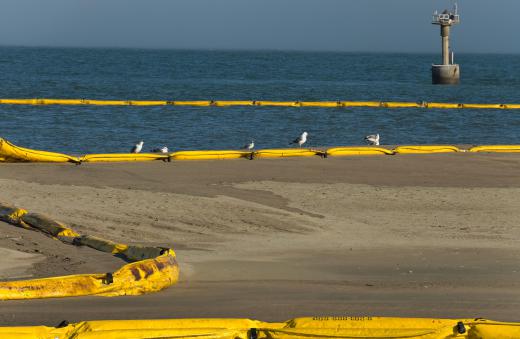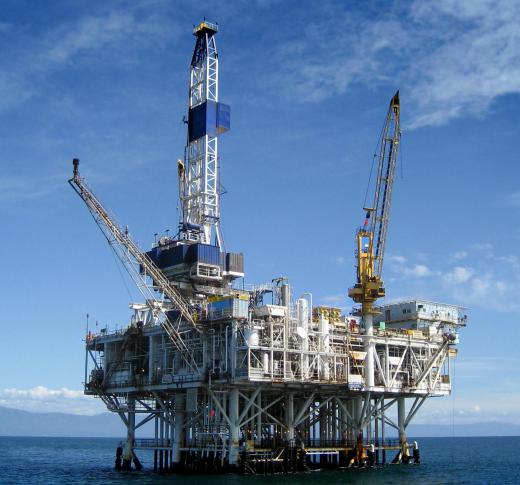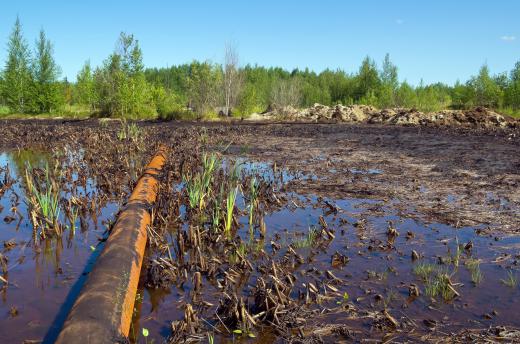Offshore oil drilling is an oil extraction technique which allows oil companies to access deposits of oil buried under the ocean floor. Most typically, offshore drilling sites are situated over the continental shelf, although advancements in drilling technology have made platforms even further out to sea economically and physically feasible. Many people are opposed to offshore oil drilling, due to concerns about its impact on the environment, and the unaesthetic appearance of oil rigs off the coastline.
Many sections of the Earth's oceans have massive deposits of oil buried deep beneath their surface, and these oil deposits are extremely appealing to many oil companies. The first offshore oil drilling operation was established in 1938 in the Gulf of Mexico, and other producers quickly started to follow suit in other regions of the world. By the 1970s, many communities had enacted specific bans against offshore drilling, and the issue became a bone of contention in some areas.

There are several ways in which an offshore oil drilling operation can be run, and the type of oil rig used is usually dependent on the depth at the location, the type of oil, and prevailing conditions. Classically, fixed rigs are built into place on the ocean floor, with multiple well heads and adjustable parts to allow engineers to extract oil from the surrounding area. Floating rigs are also used, in some regions, and in some areas offshore oil drilling is conducted on ships for even more mobility.

Working on an offshore drilling rig can be extremely dangerous. Several accidents have caused rigs to explode, capsize, or become badly damaged, with accompanying loss of life, and many crews today are housed offsite, so that if something happens to the rig, the loss of life will be less severe. Workers on oil rigs still have to contend with severe weather conditions, problems with the rig, and geological conditions which could become dangerous, and they are typically highly paid in recognition of the risks of the industry.

The environmental effects of offshore drilling are primarily caused by pollution related to poorly maintained and operated rigs. Oil spills around rigs are common, especially at the seafloor, where drilling may stimulate seepage, and heavy metal pollution can also occur. Some people also feel that offshore oil drilling disrupts and confuses marine life, although ironically rigs can also provide shelter to seabirds and fish.
Ever since she began contributing to the site several years ago, Mary has embraced the exciting challenge of being a About Mechanics researcher and writer. Mary has a liberal arts degree from Goddard College and spends her free time reading, cooking, and exploring the great outdoors.

